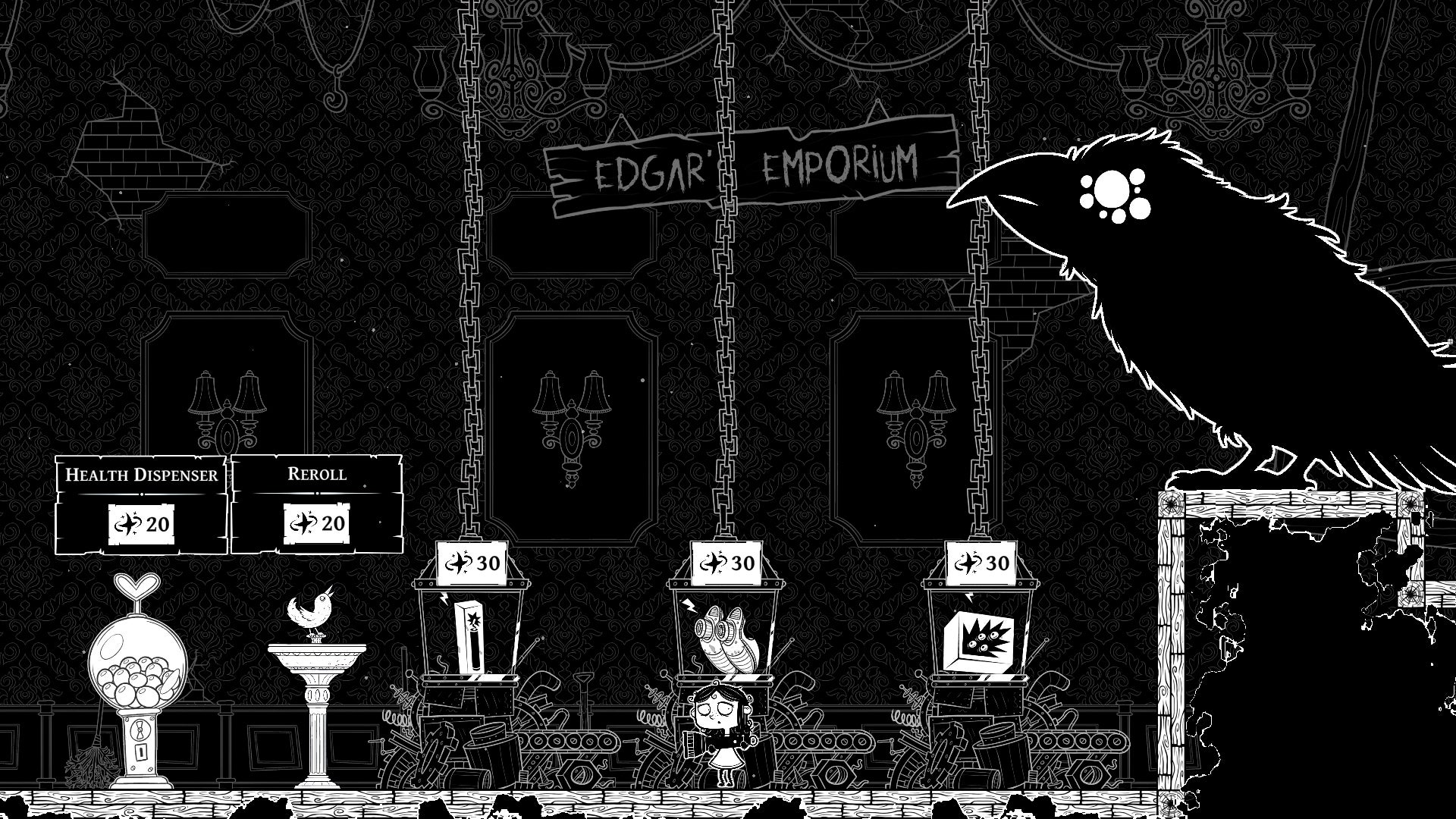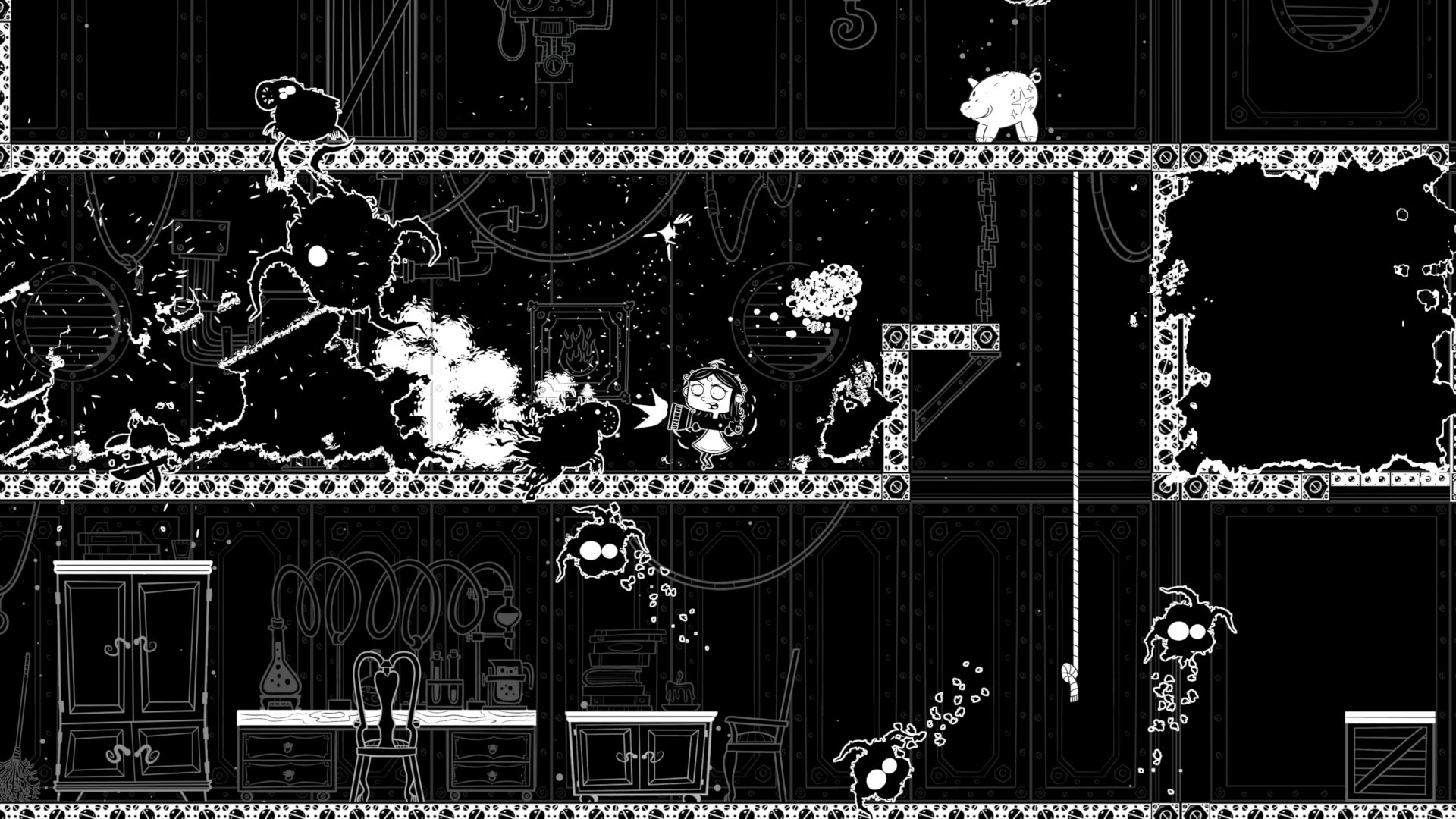Under the Stairs is a small studio based in Zagreb, Croatia, and on July 14, its first game finally hit Steam. From a small, tight-knit team, Eyes in the Dark: The Curious Case of One Victoria Bloom yielded a 5/5 score in our review for its unique take on, and fresh approach to, the roguelike genre.
The roguelike genre isn’t my favourite. While you can catch me ploughing hours beyond hours into various sims that require a tonne of grinding, roguelikes have never been able to keep me hooked for all that long. Eyes in the Dark, however, felt like a breath of fresh air, and almost like it was made for people like me. For people that have just never gelled with the genre.
We sat down with Under the Stairs’ director, Vladimir Bogdanić, to talk all about how the studio came together, and how Eyes in the Dark came to fruition. From indie development, inspirations, music, and even what the future holds for Under the Stairs, here’s our insight into the world of Under the Stairs and its quaint game, Eyes in the Dark.
How did Under the Stairs, a ‘tight-knit group’, come together? And how did the idea of Eyes in the Dark come together as a result of that?
Vladimir Bogdanić: At a game jam, we made something, but we weren’t quite sure what it was. A bunch of people left, but the idea stayed, and it wasn’t really until a couple of years after that we finally started as a studio. Mostly because I didn’t really have access to any funding or anything.
The company itself was founded when we found investors in the UK, and then it really became a much bigger thing where we suddenly had money and could hire people, and we could start working on this properly.
Up until that point, I ran a small web development company on the side. And I still kind-of do. I was basically using the funds from the web development stuff to bootstrap the game development efforts. We weren’t sure what we were getting ourselves into, but it worked out in the long run.
I’ve read that the team at Under the Stairs all have interests across different genres. How did these come together and inspire the game?
Vladimir: It was definitely kind of a tug-of-war thing where a lot of us are coming in with different interests and perspectives. What happened was that all of us and our different backgrounds came to reinforce the idea by simply solving problems uniquely or offering different perspectives.
There were moments in development when there was a consensus around a particular problem and how to solve it, but then one person really wanted to do something else and made a really good case for it. That became the solution. Speaking more in broad terms, I think that’s really valuable to have on small teams; people coming from different backgrounds and giving their own unique viewpoints.
There are not a lot of opportunities in Croatia: a lot of us have grown used to working different types of jobs who require a different skill set, so over time you tend to learn a lot of different things, and when you get to a project like this one, it all really helps.

I also learnt that you used to be a resident DJ for quite a few labels. Did music, and your experience with it, tie into the development of Eyes in the Dark and its soundtrack at all?
Vladimir: Oh, absolutely. I know a lot of artists from the psychedelic-trance music scene, and I’ve toured extensively, so I have a few contacts there. When we were thinking about what to do with the soundtrack, I had a pool of people that I could touch base with.
As opposed to the art style and direction, which was Filip’s [Filip Neduk, Game Designer] thing, the music was more of an iterative process in the sense that I have a lot of unused tracks on my hard drive. There is a lot of music that hasn’t made it into the game for whatever reason, and I think the good thing there is that I have the experience of curating tracks for record labels. So, I know what it takes to build a music compilation, and that has been really useful in nailing down what type of feel we want for the soundtrack.
The game has a very flat art style with no depth or blurring; how do you make music that accompanies that? Initially, we had lots of reverbs, echoes, and more orchestral-type tunes. Eventually, we got to scrap all of that and went more along the lines of “let’s have some more chip tunes”; something that sounds kind of flat, but when you listen to it, there are layers in there, but it’s all compressed and matches the style better.
Another key thing that I think really helped is increasing the tempo and making sure that no matter what you’re doing in the game, there’s some kind of beat to keep the pace going so that you don’t get bogged down. That was a key decision that we made that influenced the entire soundtrack.
What you think makes the flashlight stand out? And did it, alongside ‘light combat’, pose any issues during development?
Vladimir: There were definitely a tonne of issues. There’s not one specific thing here that I would say makes the flashlight the best thing ever, it’s more a combination of multiple smaller changes over the course of a really long time. It’s small touches like when you activate the flashlight – it doesn’t immediately turn on, there’s a little bit of a delay.
Challenge-wise, when we initially started with the idea of using the light as a combat mechanic, there was no tinkering. You weren’t combining bits and pieces to get a flashlight. We had a flashlight, some matches, a flare gun, and we had some cherry bombs. We were just messing around with using those in any scenario. So, you’d start exploring, and you’d waste things like battery charges, fire, or whatever it was, and the game slowed down to a crawl.
For the flashlight, it mostly came down to using it as a melee-like weapon – more like a shield, honestly – rather than something that pushes you forward. Then we kind of crystallised there, into “let’s have these three different categories”: the flashlight, projectiles, and gadgets.
That’s how it evolved. The main differentiator was that this is a flashlight, we want someone to tinker with it, and every flashlight has a place for batteries. So, what if you could put different types of batteries in there to change how it works?
It’s taking inspiration from a real world object, and giving it a power trip fantasy, so that you can go wild with it.

Eyes in the Dark captures the gloomy, gothic mood of the mansion through both its design and inspirations, and the experience is true to a child being scared of the dark – is this what you were aiming for?
Vladimir: I’m really happy to hear you say that, because it’s definitely a feeling that we were trying to capture. One of the inspirations, for me, was the Beetlejuice cartoon. If you’re watching it from a distance, there’s always that “Oh, this is really weird and creepy, what the hell is going on?” but everything has a really light-hearted tone. It’s really fun and engaging.
I think a lot of horror and related games don’t often go that route, it’s more jump scares or gore or whatever.
Another thing, in terms of architecture and level design, is that a lot of roguelikes have random level generation. We wanted our game to feel like an actual place. That comes at a cost from a production point of view.
There’s more manual labour involved, but the end result is that it feels like a place; a place you’d want to visit. You enter a room, and it’s not just a random set of tiles and levels, it’s an actual room in a mansion. That was the intent all along, and I think the narrative helps to reinforce that.

What made you decide to make the game non-linear, and did any other games inform you of what you did not want to do with Eyes in the Dark?
Vladimir: We definitely love the roguelike genre, I could name titles like Binding of Isaac – it’s been a huge inspiration – and I’m a huge fan of Spelunky, for example. But also games like Slay the Spire or Dead Cells.
We didn’t say “we really love this one game, we’re gonna rip off half of it then do our own thing”. We looked at the entire genre, and we figured what can we do here that will set us apart? What can we do to try and push the genre in a different direction? I honestly think that the genre has a tonne of potential for some cool and innovative stuff.
Initially, we had something that was more traditional; you finish a run, and maybe gain some experience, unlock some information, but it was more grindy. One of the things that I don’t like about modern roguelikes is that they tend to lock a lot of the content behind a grind, and look, I have a 10-month-old son, I don’t have the time!
I want to just play it, and I want to be done with it, but at the same time, I like being able to return to it now and then and maybe get a different type of feel for it.

Are there any aspects of the game, now that it’s out there, that you wish you could change, and do you have plans for any post-launch updates?
Vladimir: The narrative overall has been the hardest one to nail, initially we had more of a quest-based system. It became a big problem because you’d become confused; when does a quest end? Is it when you pick up a couple of items? But then you’re done with the quest, so what’s the incentive to keep going?
That was a huge thing that we iterated on a lot. In the end, we decided to do something where you will gain some sort of narrative information; something that is going to expand the storyline further and progress everything. But, it’s still a run where you have to finish everything from beginning to end. I think that was the right choice to make.
In terms of what we want to add, I would like to add more bosses and enemies, maybe more zones that rotate depending on what run you’re doing. I think we left the structure, overall, open enough so that we can add more items, impediments or perks. It mostly boils down to how the next couple of months look for us.
In terms of the general structure and how it’s been done, I would probably not change much. We’re really happy with the end result, especially for our first game.
Do you have plans to do anything differently on your next game?
Vladimir: We’re in the very early stages, so I can’t really share information. The only thing that I would say is, as you said, Eyes in the Dark hopefully makes roguelikes more accessible to people who don’t generally play them.
Let’s just say that I would like to do the same thing with a different genre.
Eyes in the Dark: The Curious Case of One Victoria Bloom launched on July 14, 2022 on Steam and the Epic Games Store.

